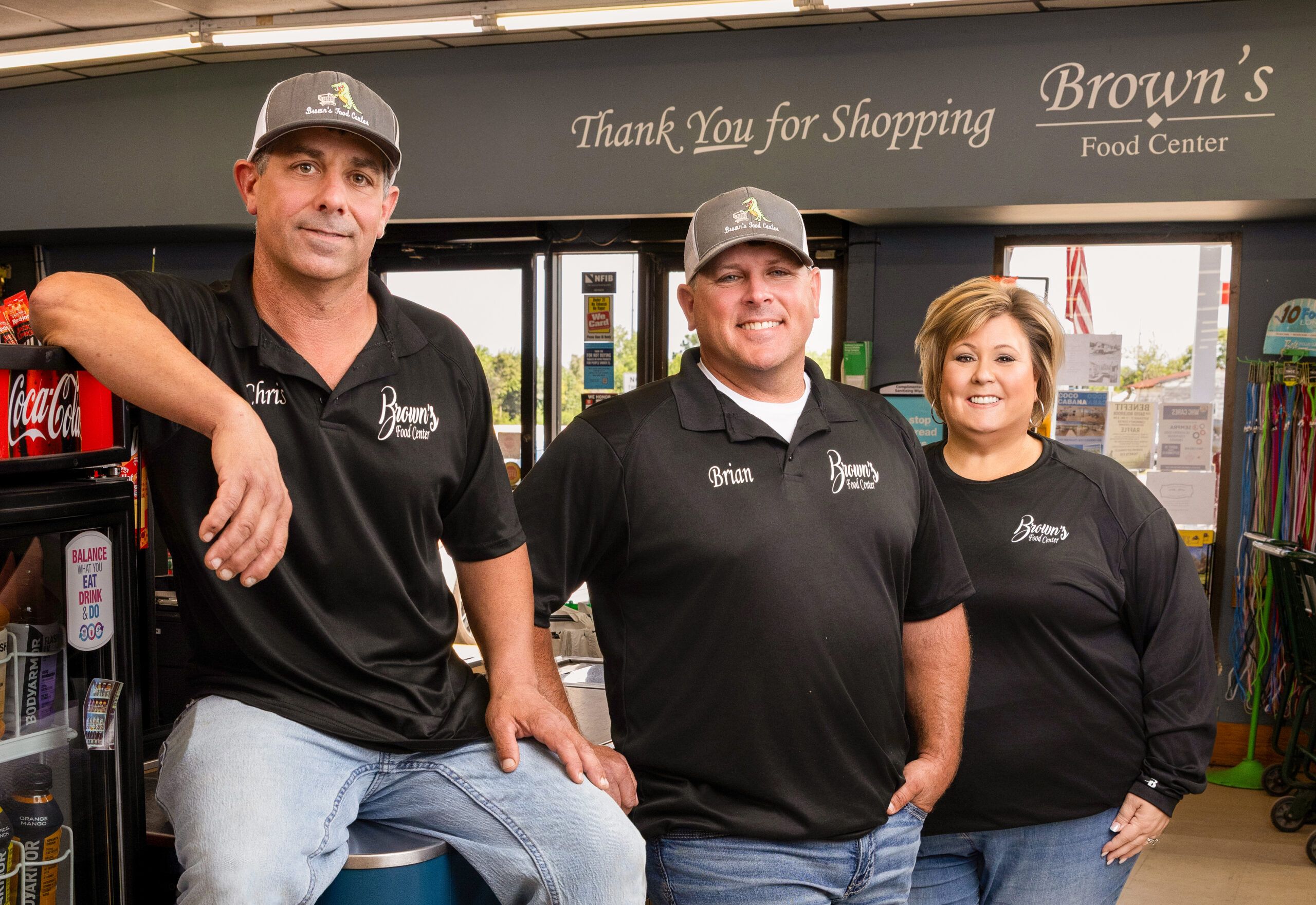There have been numerous storms since Brown’s Food Center opened its doors in 1978, but it was Hurricane Ike in 2008 that nearly sent Jim Brown packing.
His Hackberry grocery store took on 18 inches of water and everything was a mess.
“A good friend of ours took us to the store the next day in his boat,” says Brian Brown, Jim’s son and one of the current managers of the Cameron Parish store. “You’d be surprised how much mud and dirt were inside. I can remember my dad just being so disgusted. He was like, ‘What are we going to do?’”
It was the closest the Brown family ever came to leaving, and that’s saying a lot. They’d already been through Hurricane Rita just a few years earlier, a storm that literally changed the southwest Louisiana landscape and prompted half the Hackberry population to pack up and leave permanently.
RELATED STORY
Louisiana’s energy market is undeniably impactful, but notoriously hard to predict.
It was the town’s response after Ike, though, that convinced them to stay. “Once the water receded, the town just pulled together and helped us get the store back up and going, and at that point there was no way we could not reopen,” Brown says. “They wanted it open just as much as we did.”
Brown’s Food Center is located just 20 minutes from the Gulf of Mexico on Highway 27, a vital north-south, two-laned route that connects LNG plants and marine facilities along the Intracoastal Waterway. The Creole Nature Trail is also nearby.
They’re the only grocery store for miles and a vital resource for hot lunches, catered events and grocery deliveries. “If somebody wants a hot lunch, we’re nearly the only game in town,” Brown says. “There is a rec center here that cooks sometimes … hamburgers, hot dogs, that sort of thing. But other than that, you have to get it here.”
In the early days, before LNG’s arrival on the scene, they primarily serviced the offshore market. There were numerous docks in Cameron Parish for offshore crew boats, and a smattering of natural gas plants along nearby Johnson Bayou. That all changed when Hurricane Rita slammed into the coast in September 2005. The industry was decimated, and many people left town. Today, only one offshore dock remains.
A Vital Connection
At 23 years of age, Jim Brown opened his grocery store after graduating from McNeese State University and working a short while in the offshore industry. At the time, the store was only 3,500 square feet; a few years later, he expanded it to 10,000.
Brian Brown got his start in the family business when he was 13 years old, bagging groceries, unloading trucks, stocking etc. Today, he manages the store along with his siblings Jamie and Chris. His mother, Janie, is a co-owner, and his father remains involved with the company.
It’s a small store, so everyone wears multiple hats. The full-service supermarket features fresh cut meats, and a deli offers hot lunches throughout the day. “We also do specialty meats and make our own sausage,” Brian Brown says. “Other than that, we’re pretty much your basic supermarket.”
From the beginning, Brown’s Food Market has been a critical supplier of groceries for the local tugboat fleet, which can be away from land for days or weeks. Today, tugboat companies will place regular orders, sometimes in the thousands of dollars, and Brown’s will deliver them as far away as Lafayette or Houston. More typically, the deliveries are much closer, as the Intracoastal Waterway is only about 8 miles from the store.
Of course, the nature of their relationship with the LNG market is different. While they don’t supply them with groceries, workers and managers will often call in large orders for 40 or 50 lunches. Other times, workers will come into the store needing a quick and hot meal. The various contractors and material suppliers who support the plants also come pouring in.
Stevie Trahan, external relations manager at Cameron LNG in Hackberry, says they share a special bond. “In the beginning, they would come out twice a week and bring a fruit tray,” Trahan says. “We only had about 60 employees at the time, and we all looked forward to that fruit tray.
“Their food was good and their service so timely, we eventually asked them if they were interested in catering larger groups of up to 200 people. It worked out great. We tell them they need to be ready to serve at 10:45 for a lunch at 11, and they’re ready at 10:30 and it’s top notch.”
Other area businesses have proven to be equally vital. Despite its roof and one side being blown off during Hurricane Laura, Currie’s in Hackberry re-opened as an “open air” hardware store. “You can get what you want at night and just take a picture of it, and then they’ll put it on your bill the next day,” Trahan says.
At times, Trahan says, these local businesses are as crucial to their operations as a major contractor or raw material supplier.
“We can get what we want in just 15 to 20 minutes,” he adds. “There are times when you have a big meeting, and this goes wrong or that goes wrong, and you’ve got to have something now. We can call Brown’s or Currie’s and get it. It makes you feel good to work with families like theirs who are tied to the community, live in the community and are invested in the community. I think that’s very important.
“After hurricanes Rita, Ike, Laura and Delta, the guys at Brown’s and Currie’s were open the next day. There was no electricity, but they propped their doors open, and you came and you went, and if you didn’t have cash, they put it on a ticket for you.”
Ultimately, the hurricanes and resilience of the community in their aftermath created an unbreakable bond. “We’re a small store out in the middle of nowhere,” Brown says, “but it makes you feel good that people care, especially in an industry that’s so big.”



